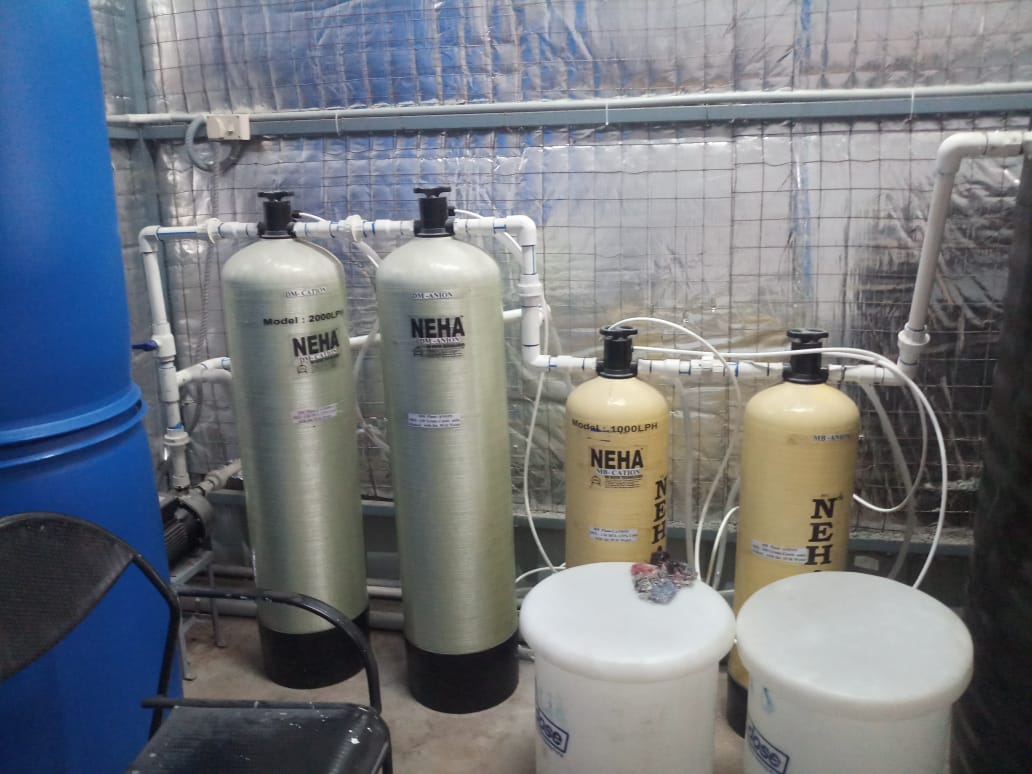
DM Plant
What is Demineralizer?
A demineralizer is a system, which uses ion exchange chemical process to remove dissolved ionic compounds (salts) from water. It is also known as Deionized Water System, Demineralizer or DM Plant. A typical Demineralization Plant (DM Plant) consists of two vessels. The feed water or raw water is passed through first vessel i.e. containing strong base cation resin in the form of Hydrogen (H+), whereupon all the positively charged ions (sodium, calcium, iron and copper etc.) are exchanged for Hydrogen ions; after that, the water further passed through another vessel containing strong base anion resin in the form of Hyudroxyl (OH-), whereupon all the negatively charged ions (chloride, sulphate, nitrate, etc) are exchanged for hydroxide ions which then combine with the hydrogen ions to form water.
Types of Demineralizers
-Two Bed Demineralizer
- Mixed Bed Demineralizer
Demineralizer Configurations
- Portable water demineralizer
- Packaged DM Water Plant
- Custom Built DM Plant
DM Plant Regeneration
Depending upon frequency of use and DI Water output, resin becomes exhausted and does not capable to deionize; in other words, their power of removing ionic materials reduces and active ion concentration reaches a low level. The process of restoring their power or enhancing active ion concentration level is called regeneration. In this process exhausted cation and anion ions are recharged with Hydrogen (H) Hydroxyl (OH) ions.
Demineralizer Applications
- Labs
- Chemical Processing
- Glassware rinse
- Textiles Mills
- Plating
- Electro deposition
- Cosmetics Production
- Printing
- Glass/Mirror
- Boiler feed
- Cooling Tower
- Vehicle wash
- Film processing
- Ice plants
- Horticulture / Greenhouse
- Food / Beverage processing
- Electronics Manufacturing
- Testing and materials
- Research and development
- Hospitals / Medical facilities
- Metalworking lubricants
Two Bed Demineralizer
Often called Dual Bed, Two Bed Demineralizers have the cation resin and anion resin in separate vessels. They can be regenerated is series (cation followed by anion); or in parallel (cation and anion simultaneously). Anion resin must have the hardness removed from the influent water to prevent hardness fouling. The Cation resin is regenerated with acid (hydrochloric ) and the Anion resin is regenerated with sodium hydroxide (caustic soda).
Two Bed Demineralizers normally produce water quality in the range of 50,000 ohms up to 200,000 ohms resistivity, which is between 8.5 and 2.0 ppm TDS as CaCO3. Automatic mixed deionizers utilize the same resins but mix the two resins for use. This produces a significantly higher purity than two column design, up to 18 megohm.
Mixed Bed DM Plant
Mixed Bed DM Plant is a single vessel unit, which combines Cation and Anion exchangers in a single column. When it comes to require high-purity Demineralized Water, mixed bed demineralizer is considered more efficient in many ways. It is used as polishing unit to purify water to higher levels, which is treated through Two Bed demineralizer or Reverse Osmosis Unit at earlier stage. At Bionics Advanced Filtration Systems, we manufacture mixed bed demineralizer plant up 50 m3/h with manual or automatic regeneration facility as required.
DM Plant Specifications
Flow rates
Up to 10000lph
Configuration
Dual Bed or Mixed Bed
Vessel
FRP / MS
Vessel size
8” -18” in diameter
Operation
Manual or Fully and semi-automatic
Pipe Size
1’’ -2”
Optional
Frp Vessel
Skid mounted unit
Installation
Covered or open